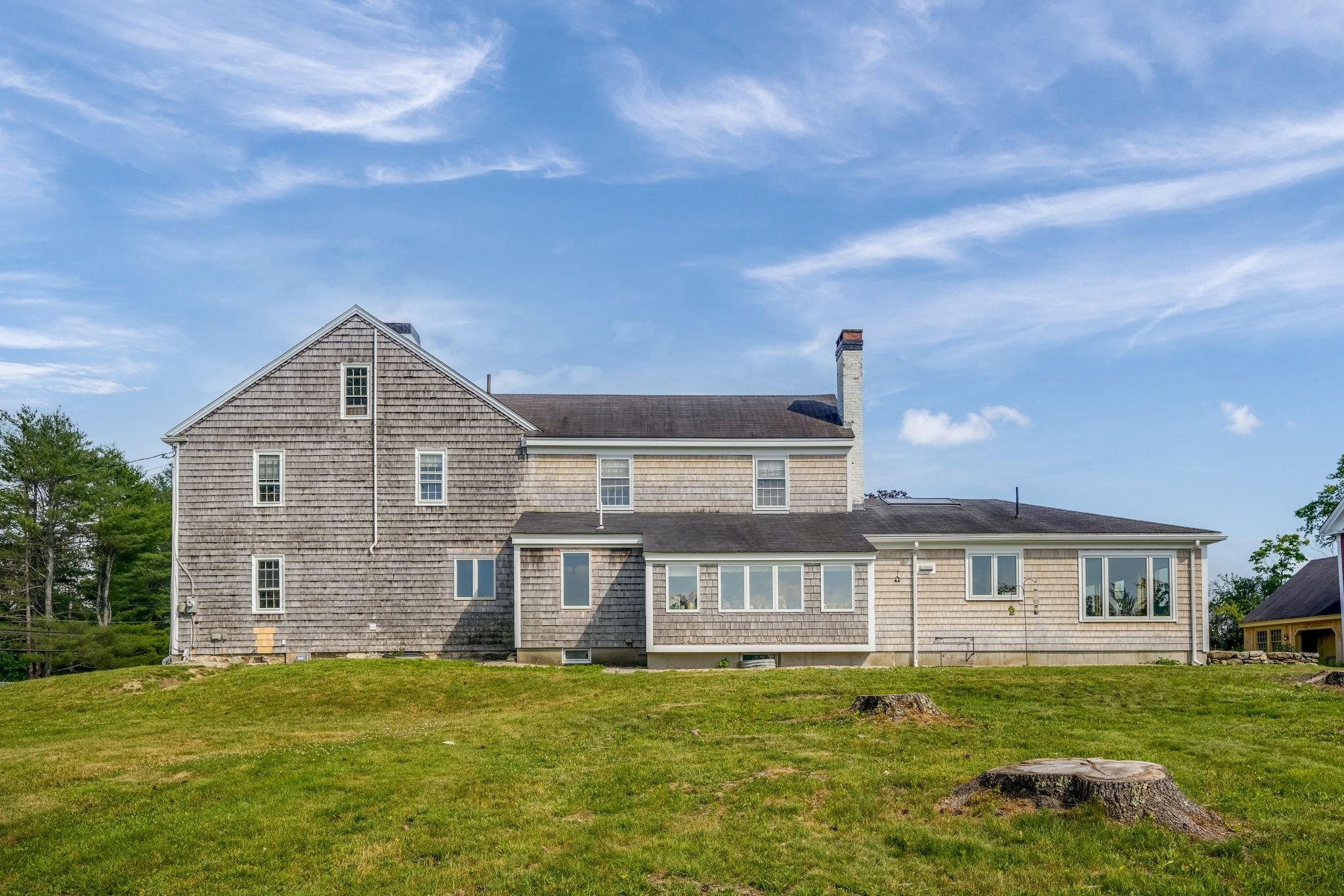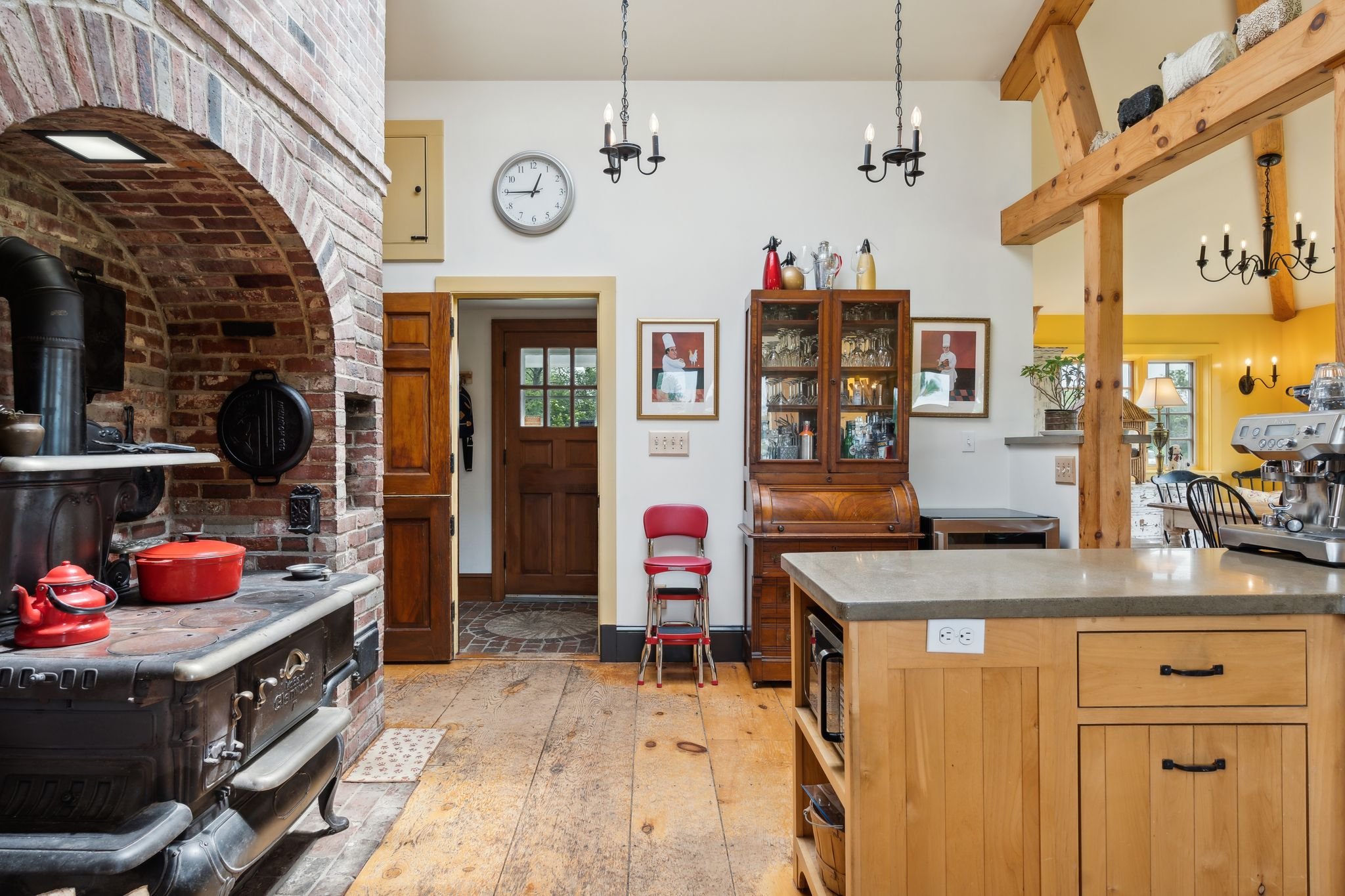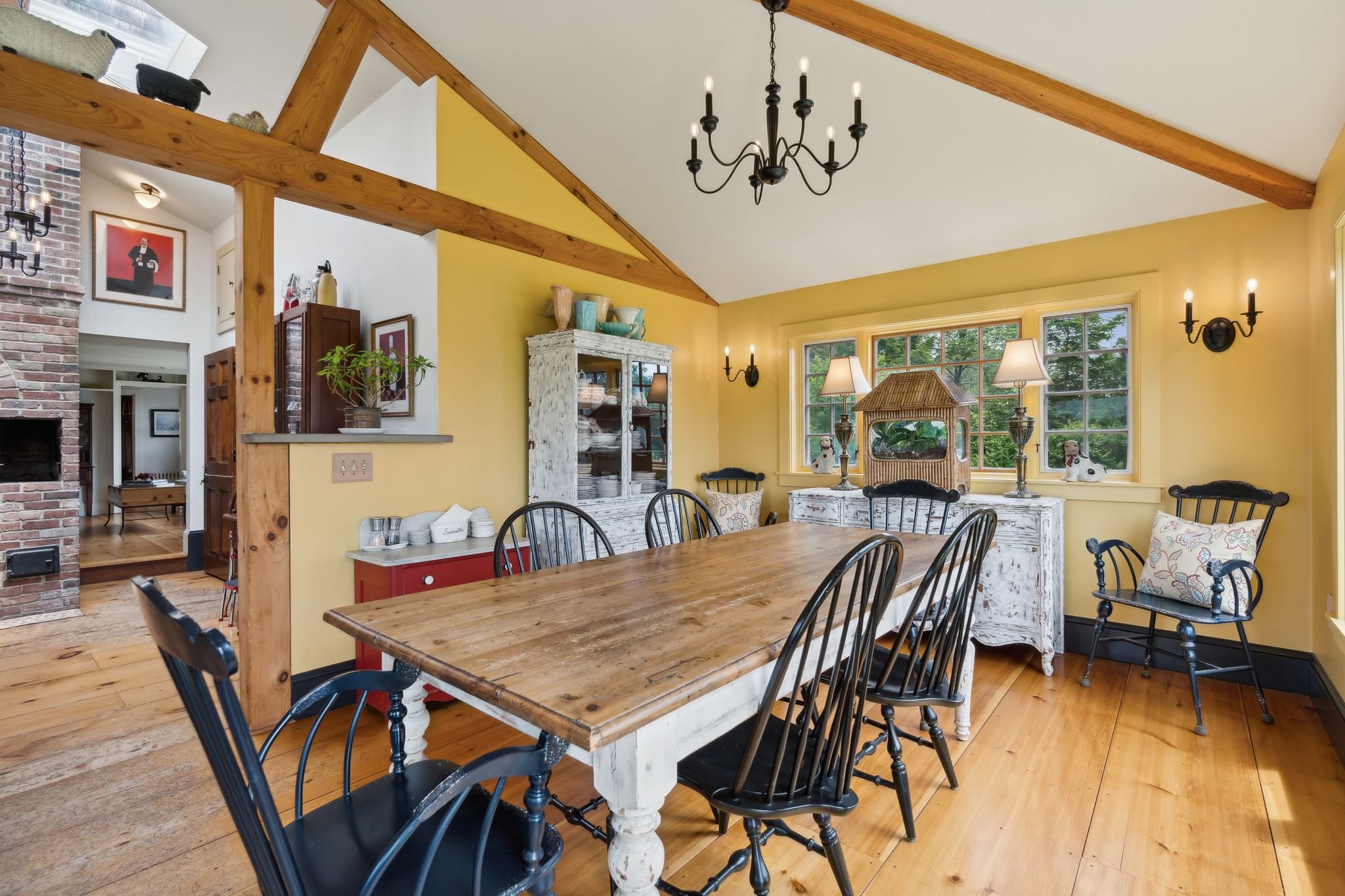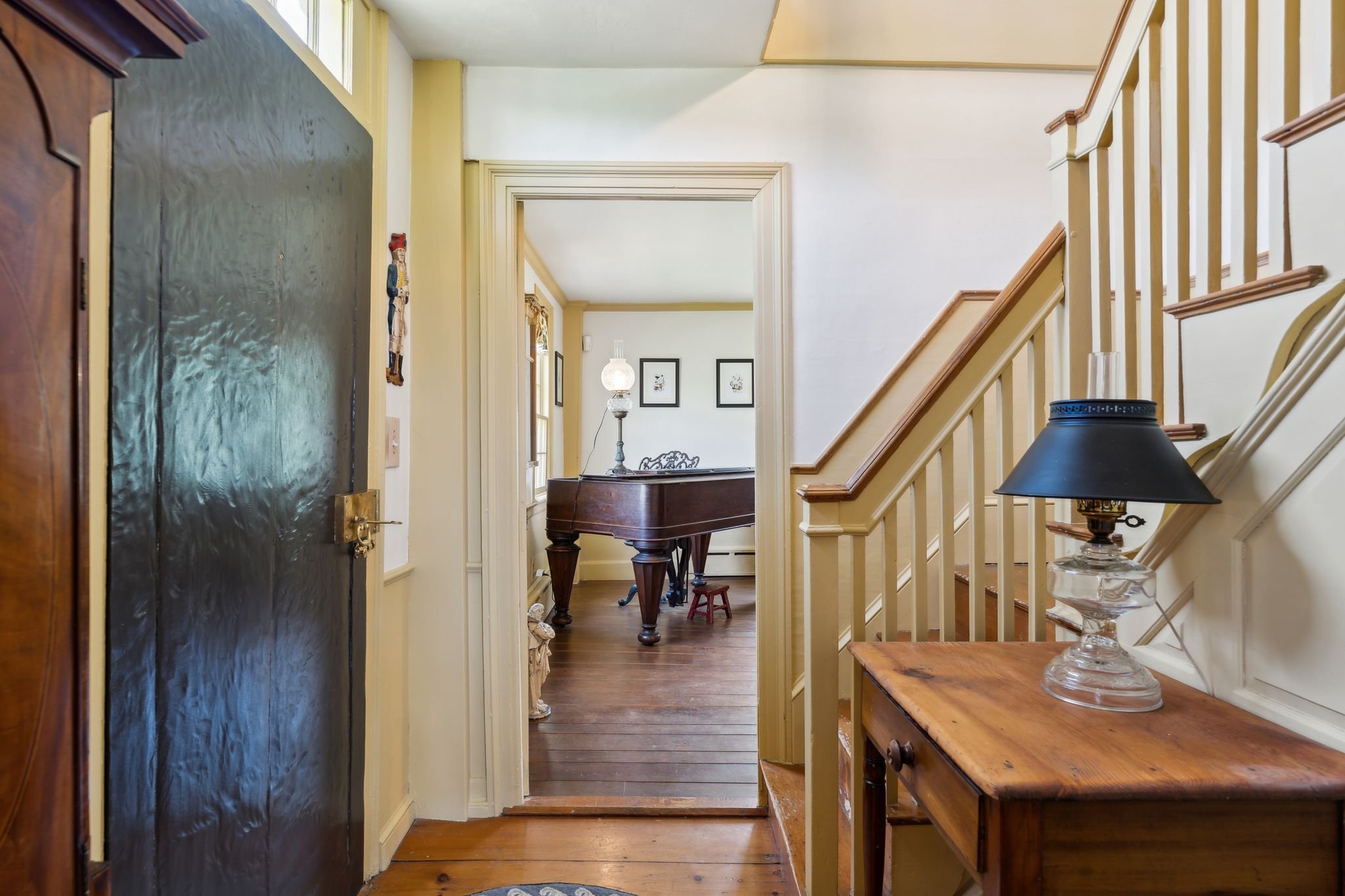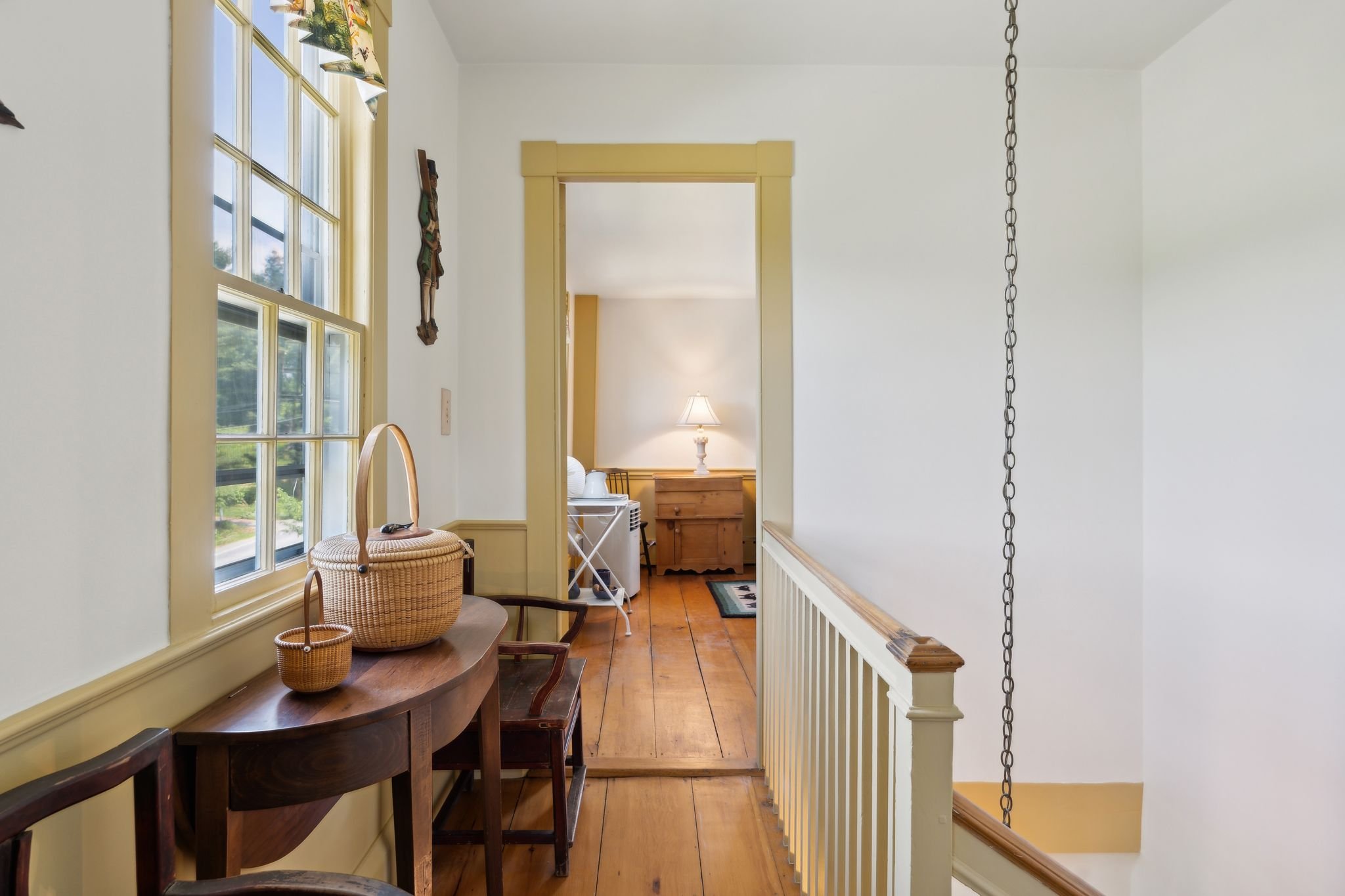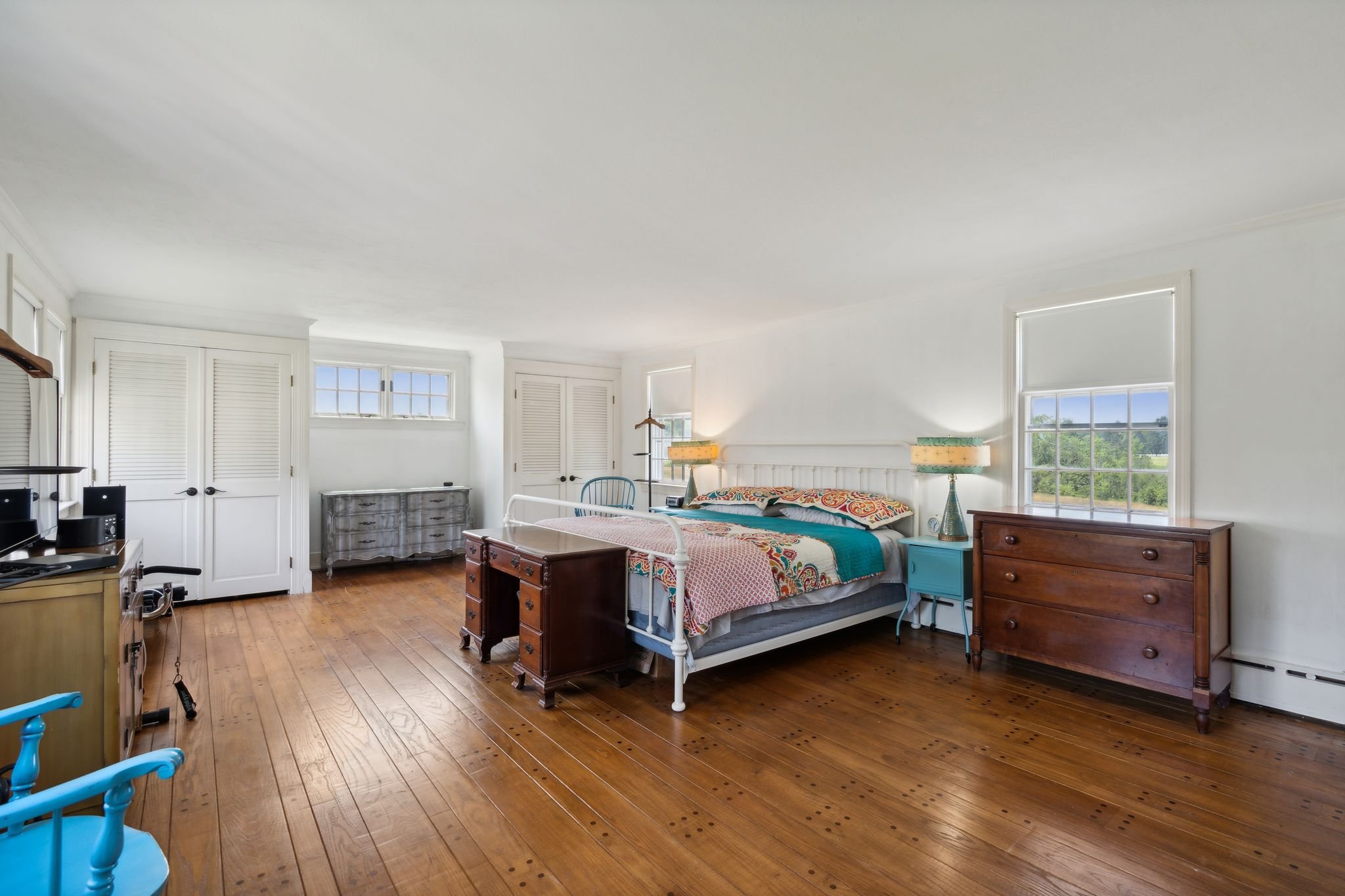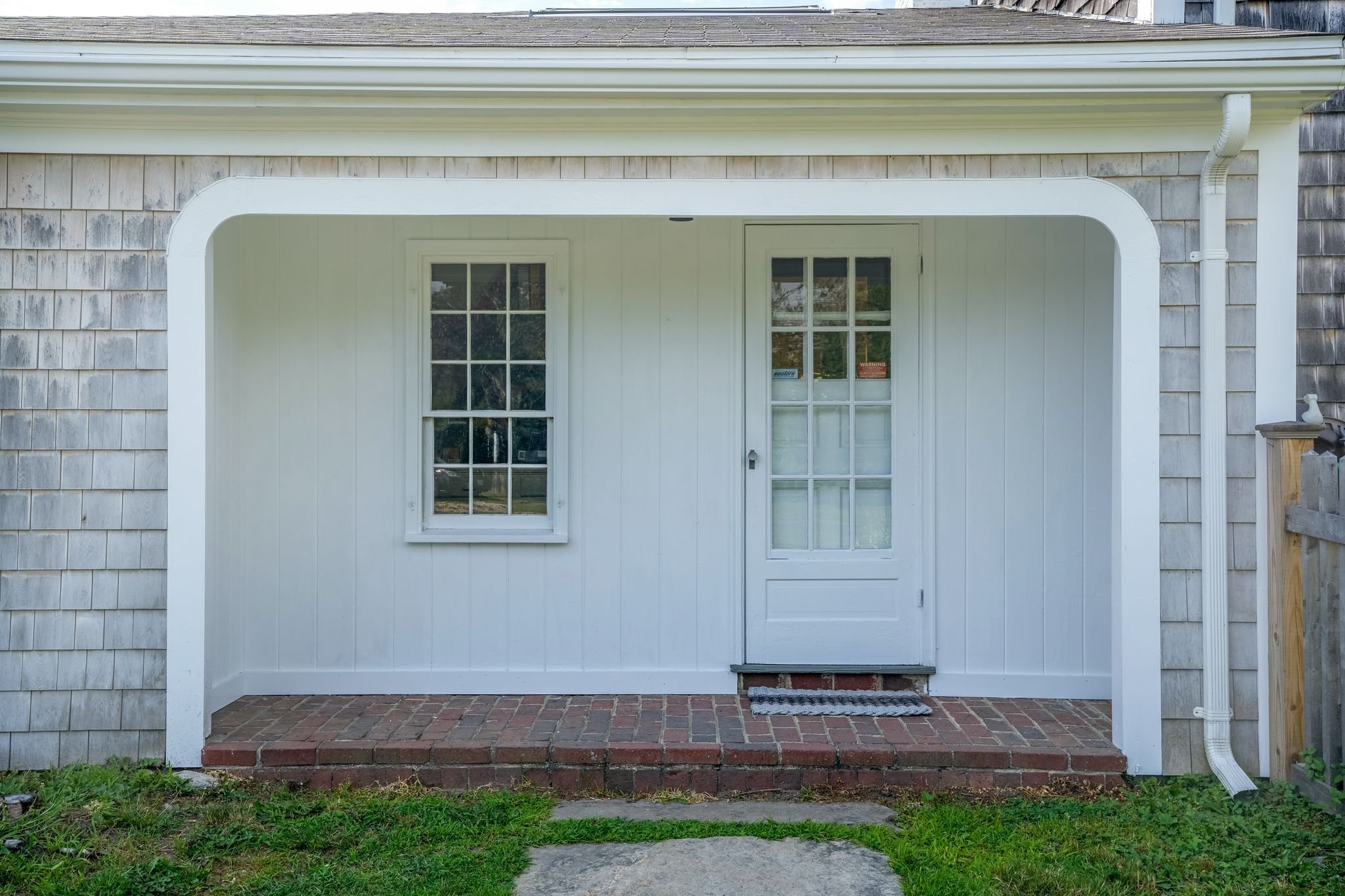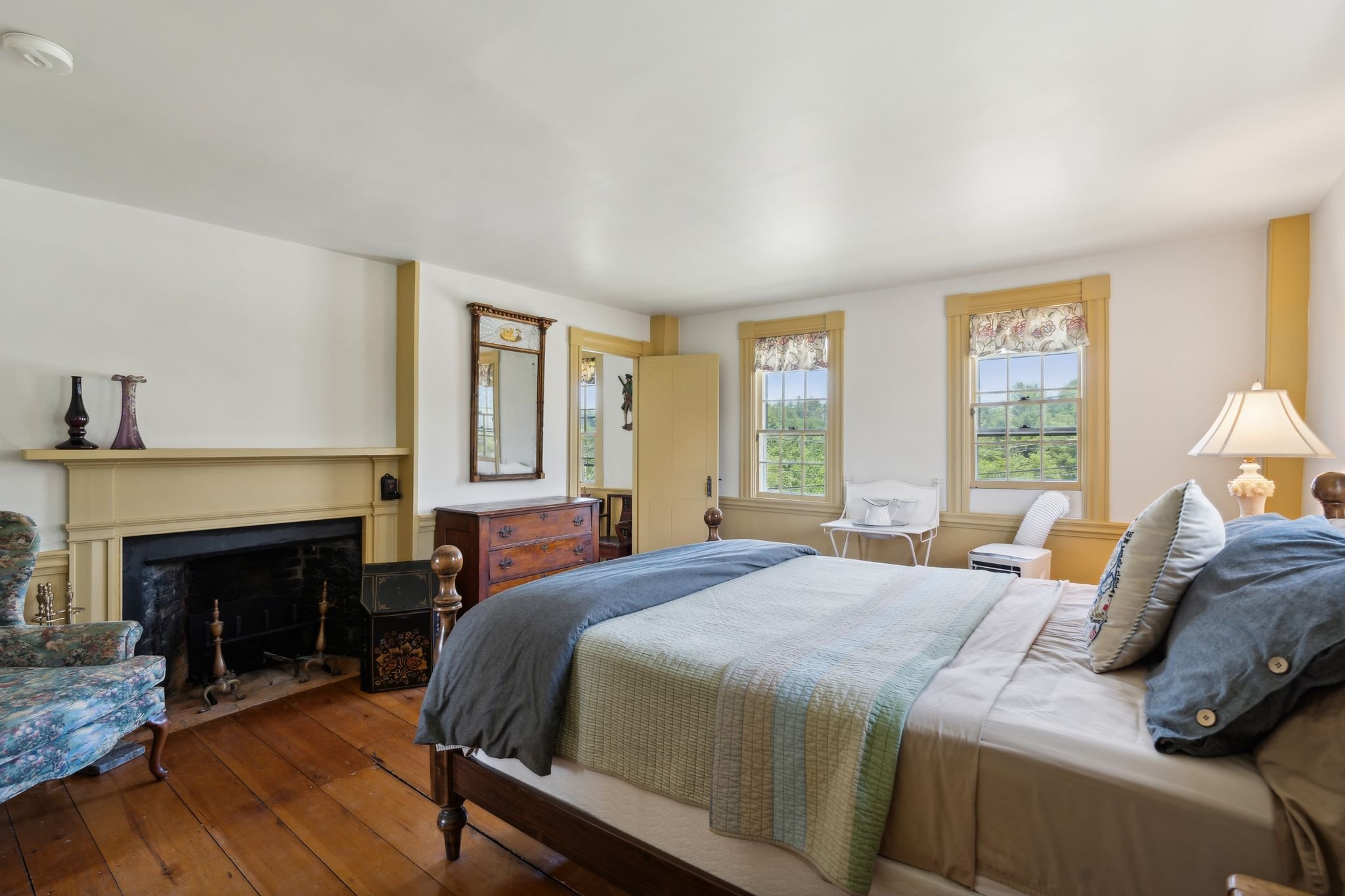
The Main House
4 Beds | 3 Baths | 3,922 Sq. Ft.
The Main House
The Tuttle-Reed House is a classic early New England home, vernacular in style on the outside with a “cape” floorplan inside. The house faces roughly north. Portions of the house may date to 1740, but it is more likely that it was constructed in the 1790s. Today, the main house retains much of its appearance from that latter era.
Once clapboarded, the exterior of the house is presently covered with wood shingles. The primary facade is divided into five bays, a typical arrangement for the era, but upon closer inspection, one notices the windows are not evenly spaced and do not align from floor to floor. Rather than a mistake, these peculiarities are likely clues to the building’s evolution. Window openings have period-appropriate wood windows with nine-over-six sash. Ornamentation is found only at the entry door, which has a Georgian door surround with wide, tapered pilasters, four transom lights, and a bold entablature.
Attached to the rear of the main house is an two-story ell beyond which is a one-story addition. The earliest photographs show a short, one-story ell behind the main house, which was likely carriage space or an early garage. The extant two-story addition likely dates to the 1960s.
Main House – Interior
The present owners invested considerable time and talent restoring, repairing and improving the interior of the house. Modern wallpapers were removed, plaster walls and ceilings repaired, and the ceilings, walls, and trim were repainted in charming, period-appropriate colors. The result is a house that retains its age and patina, but is still completely livable. The interiors are warm and inviting, rather than formal and precious. The rooms are spacious, the layout flexible, and the necessary upgrades are already in place.
Cellar
The cellar below the main house truly shows the age of this structure. The immense stone slabs that make up the floor, fieldstone walls, massive masonry supports for the fireplaces above, and the undressed logs that support the first floor are visible reminders of both the age of this structure, and the intensive labor house building once required. On the west wall, one can find the remnants of a cistern that stored water for household use. Due to the extensive drainage work recently completed, the cellar is surprisingly dry.
First Floor
The plan of the first floor has seen few changes since the late eighteenth century, when the second floor was added. It is likely the stair and fireplaces were also updated at that time. The house has a classic “cape” floorplan, with three rooms across the front and three more across the back. The front rooms are deeper than those across the back of the house and all of the major rooms abut the massive center chimney, as fireplaces were the only source of heat when the house was built.
Most of the rooms retain original plaster-on-lath walls and ceilings, and many of the floors are old, wide pine planks. All of the fireplaces are fully functional, and have a working damper in place. Wide-board wainscots and chair rails remain in the primary rooms. Four-panel doors with a range of wrought iron latches also remain throughout the first floor.
Passing through the front door, one arrives in a shallow entry hall illuminated by a pierced and stamped brass lantern. The winding stair, typical of its era, mixes painted and clear-coated wood and has a scalloped detail at the stringer. The entry hall has a closet under the stairs for storage. Behind the stair is the chimney mass and from inside the closet one can see the back of the beehive oven. Remnants of clay mortar in the masonry are a reminder of the age of the house, built before lime was widely available.
On either side of the entry hall is a remarkably well-preserved parlor. Each has a fireplace with a cupboard built into the wall above the mantelshelf and hooks for a wrought-iron crane in the firebox. In the west parlor, the windows have shutters that slide back into the walls. On the south wall, built-in bookshelves blend into the room and offer space for books or to display collections. The east parlor has a formal mantel and a more recent wood crown molding at the ceiling.
The south side of the first floor was once a large, central room with a smaller room on either side. The center room remains, dominated by the massive fireplace and its wood mantel. The massive beams overhead, the fireplace, with its built-in oven and heavy wrought-iron crane, and the wide board floors remind one of the age of this home. Originally, there was a small room on either side of this space. The partition at the east end was removed at an unknown date to create a larger space. On the west side, the smaller room remains and contains a spacious laundry room with built-in storage and a new washer and dryer.
Behind the main house is a two-story ell built in the 1960s. The first floor has its own entry vestibule/mudroom on the east wall. Along the west wall is a short hall lined with closets for storage and a door that leads to the full bath. The rest of the space is a large den with built-in bookshelves. The wide board floors in this space visually connect the space to the older portions of the house. A flue on the west wall could be used for a wood stove.
Second Floor
The original “cape” layout of the first floor is repeated at the second floor: at the front of the house, there is a large room on either side of the stair hall. Across the rear of the second floor, two smaller rooms flank a larger, center room.
Each bedroom retains extensive historic fabric, including wide plank floors, a wainscot of wide boards with a chair rail, a working fireplace with a wood mantel, rail-and-stile doors with antique hardware, and plaster walls and ceilings.
The northwest bedroom retains nearly all of its late nineteenth-century details. The complex moldings on the fireplace surround appear to be hand-planed, indicating their age. Adjacent to the fireplace is a built-in closet.
The northeast bedroom, however, was updated in the most-up-to-date style...of the pre-Civil War years. This room has Greek Revival trim – note the bold, symmetrical moldings, the corner blocks at the window and door openings, and the height of the mantelpiece. The double closet in the south wall is a convenient but more recent addition to the room.
The back or south side of the main house repeats the layout of the first floor: a large open space at the center with smaller spaces on each side. Along the east side are the stairs to the first floor and a full bathroom. This bathroom has a tub with a glass enclosure and marble-tiled walls, a sink on a vanity, and a toilet in a separate alcove.
On the west side, an enclosed stair leads up to the attic. Doors in the west wall lead to the west bathroom and a storage closet. The west bath has ceramic tile floors, a tiled wainscot, and a shower with a fully tiled enclosure. Built-in open shelves and a large linen closet offers space for toiletries and towels. This bathroom has its own thermostat.
The second floor of the ell is a large bedroom. Two good-sized closets on the south wall provide storage and a door leads directly into the west bathroom.
Kitchen Addition
The one-story addition to the ell is an open, light-filled kitchen and gathering space with lots of windows, high, angled ceilings, and skylights. Wide board floors, exposed posts and beams, and a massive brick chimney continue the antique feel of the original house into this space.
Mudroom
From the driveway side of the house, an entry door leads into a mudroom. The floor is finished with ceramic tiles and accented with an antique millstone. A convenient built-in bench seat and a shelf with pegs for coats and bags complement the antique feel of the home.
Kitchen
The large kitchen has light-colored wood cabinets, custom concrete countertops, and a tiled backsplash at the stove. All of the appliances, including the gas range, bottom-drawer refrigerator, and two-drawer dishwasher, were replaced with top-of-the-line Fisher and Paykel models within the last three years. A large brick hearth and fireplace hold a vintage Glenwood woodburning cookstove.
Beyond the kitchen is a large room with enough space for both a dining table and a sitting area. Period-inspired chandeliers and sconces complement the exposed beams and wood floors. Wide windows overlook the pond, and glass doors lead out to a brick and stone patio. The sunset views from this space and the patio are spectacular.
Just off of the kitchen is a quiet room with its own bath. As it is on the first floor, it provides a convenient bedroom for those challenged by stairs. This room is also ideally located for a home office, a playroom, or homeschool room – just close the door to attend a meeting, or hide the games that were never put away. The attached bath has been completely updated with encaustic cement tile floors, a tile wainscot, a tiled shower with glass doors, a new vanity and sink, and new lighting.
Updates & Improvements
Since 9/2/21
A new cedar fence now flanks the front of the property.
A new cedar fence was installed, enclosing the perennial garden.
The landscaping was overhauled, and trees were removed to improve the condition of the main house.
Underground and foundation drainage was installed around the entire perimeter.
Despite the remote feel of the property, it is connected to the natural gas utility, public water supply, and town sewers.
The oldest part of the house is heated with cast-iron baseboard radiators.
The two-story ell is heated with cast-iron baseboard radiators.
The one-story kitchen wing is equipped with radiant floors.
The plaster has been repaired and all room walls and trim have been painted.
A shower and a shower euro panel were added to the hall bathroom.
A new wide pine floor was installed in the first-floor bedroom.
All new Fisher & Paykel kitchen appliances were installed.
New lighting upgrades were made in the kitchen.
A new garbage disposal was installed.
A new laundry center was set up in the laundry room.
Natural gas was installed to the farmhouse, cottage, and barn.
A highly efficient Buderus boiler, the largest residential model with a power vent, was installed less than three years ago. This zoned system with six zones can be converted to oil.


